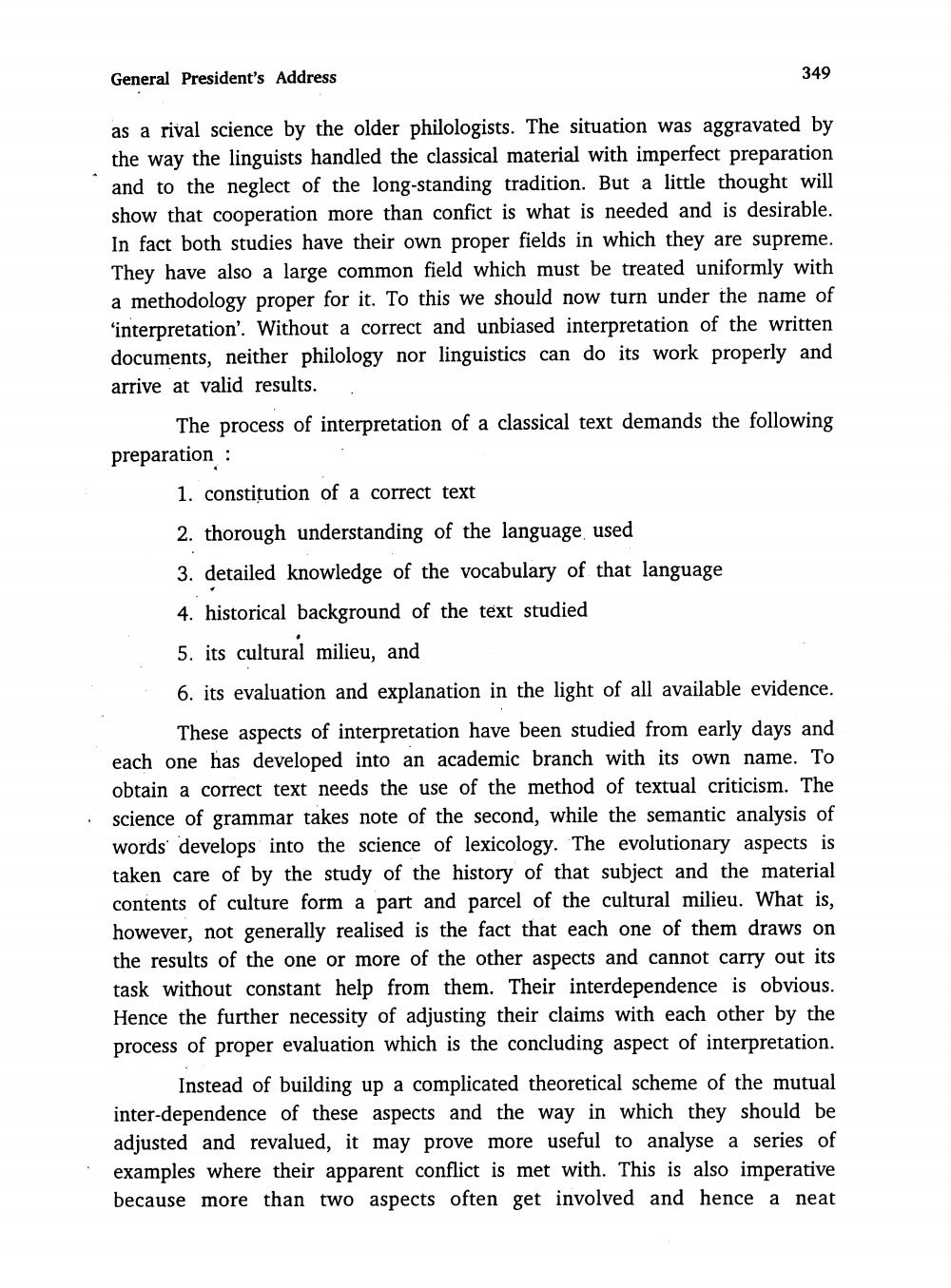________________
General President's Address
349
as a rival science by the older philologists. The situation was aggravated by the way the linguists handled the classical material with imperfect preparation and to the neglect of the long-standing tradition. But a little thought will show that cooperation more than confict is what is needed and is desirable. In fact both studies have their own proper fields in which they are supreme.
ey have also a large common field which must be treated uniformly with a methodology proper for it. To this we should now turn under the name of 'interpretation'. Without a correct and unbiased interpretation of the written documents, neither philology nor linguistics can do its work properly and arrive at valid results. .
The process of interpretation of a classical text demands the following preparation :
1. constitution of a correct text 2. thorough understanding of the language used 3. detailed knowledge of the vocabulary of that language 4. historical background of the text studied
5. its cultural milieu, and 6. its evaluation and explanation in the light of all available evidence.
These aspects of interpretation have been studied from early days and each one has developed into an academic branch with its own name. To obtain a correct text needs the use of the method of textual criticism. The science of grammar takes note of the second, while the semantic analysis of words develops into the science of lexicology. The evolutionary aspects is taken care of by the study of the history of that subject and the material contents of culture form a part and parcel of the cultural milieu. What is, however, not generally realised is the fact that each one of them draws on the results of the one or more of the other aspects and cannot carry out its task without constant help from them. Their interdependence is obvious. Hence the further necessity of adjusting their claims with each other by the process of proper evaluation which is the concluding aspect of interpretation.
Instead of building up a complicated theoretical scheme of the mutual inter-dependence of these aspects and the way in which they should be adjusted and revalued, it may prove more useful to analyse a series of examples where their apparent conflict is met with. This is also imperative because more than two aspects often get involved and hence a neat




